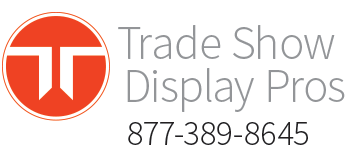Colors play a crucial role in non-verbal communication. Moreover, the human brain understands colors faster than text. Market studies have shown that colors significantly influence individuals when they’re purchasing products. As you can see, colors should not be underestimated. That’s why you must consider these when designing banners and trade show displays. In this post, we’ll help you understand the psychology of colors. With this knowledge, you’ll be able to choose the right colors for your banner ads and other marketing signage.
There Are No Good Or Bad Colors: It All Depends On Context
You may have come across articles stating that red means anger and yellow means happiness. Well, there's no scientific theory behind these statements. Instead, it all depends on the context. Culture, experiences, personal characteristics, language, and several other factors influence how we perceive colors. So forget all you've learned about good and bad colors—choose colors that match the context well.
For example, red is a powerful color that can engage and captivate your audience when used in the right way. When choosing colors for pop-up banners, retractable banners, and other marketing materials, the critical point to consider is this: does the banner match your brand’s color scheme? Use your brand’s colors to create cohesive marketing materials that will go with your logo, signage, and brochures.
Color Contrasts: The Key To Creating Engaging & Impressive Banners
Now that we understand the basics of color context, it's time to focus on another crucial aspect of banner design: color contrast. Contrast helps with highlighting important information, making it easy for the reader to distinguish the critical information from the rest of the text.
For example, if your trade show banner has a dark blue background, and you place dark-colored text on this, it’ll be challenging for the reader to see what the text says. On the other hand, using text that’s white or yellow would create proper contrast, making it easy for the reader to notice the text.
Also, note that too much contrast creates the reverse effect. Placing two or more strong colors next to each other creates a jarring effect that again diminishes readability. While choosing colors, make sure you do not exaggerate the contrast so much that the banner becomes unpleasant to the readers’ eyes.
Know Your Audience
When designing your banners, you need to consider your target audience. For example, suppose your target audience lives in a major sports town. In that case, it's a good idea to avoid using the colors of a rival sports team in your banners. Similarly, if you have a direct competitor, then avoid using their colors, as customers can mistake your brand for your rival's. Finally, avoid using too many colors, as this can feel cluttered and overwhelming. A good rule of thumb is to stick to two or three main colors in your banner design.
Use these tips and learn more about color psychology to design attractive and visually impressive banners.
